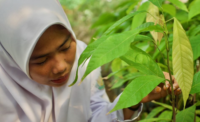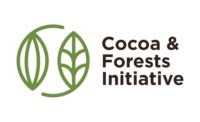The Hershey Co. has released its 2020 Sustainability Report, highlighting its progress on environmental and social initiatives during a challenging year.
The report reviews the company's holistic sustainability strategy – known as its Shared Goodness Promise – which includes initiatives across the enterprise and value chain such as responsible sourcing, respecting human rights, climate action, employee wellbeing, diversity, equity and inclusion, and community engagement.
Hershey's Shared Goodness Promise guides the company to make positive change at scale and leverage its business to advance more sustainable growth, with socially conscious and responsible business practices.
With the onset of the pandemic in 2020, Hershey's top priority in 2020 was the physical, emotional and economic well-being of its employees. The company made significant progress in its efforts to responsibly source cocoa while building healthy, prosperous cocoa communities, and took meaningful action to reduce its environmental footprint.
Additionally, the company put racial equality at the forefront of its agenda, co-creating with employees a strengthened diversity, equity, and inclusion strategy, investing in underrepresented communities and taking action to help end systemic racism.
"2020 was a year of unprecedented challenges and hardship for us all, but also one of opportunity,” said Michele Buck, chairman, president and CEO of The Hershey Co. “At Hershey, our purpose – to make more moments of goodness – and our values of togetherness, integrity, excellence and making a difference, grounded our every effort as we put goodness into action by looking after one another and working together each and every day to make a positive impact. I am tremendously proud of the progress we made and the accelerated actions we took across ESG. There remains more work ahead for us, but by continuing to put our people first and focusing on what matters most to all of our stakeholders, we are confident about the future."
Notable milestones highlighted in Hershey's 2020 Sustainability Report include:
• Managing through COVID-19: The company invested $1 million to convert traditional manufacturing operations to produce more than 40 million masks, a portion of which were donated to community organizations and schools in its hometown of Hershey, Pennsylvania.
The company also provided incremental incentives and appreciation pay to its front-line workers in manufacturing and retail workers globally, enhanced its facilities with new safety equipment to allow for physical distancing and procured personal protective equipment (PPE) and hand sanitizer for employees and suppliers alike.
Recognizing the dramatic shift for employees working from home, Hershey offered new family-friendly benefits to employees and flexible calendar management to balance added responsibilities. To make an impact on a global scale, Hershey joined forces with its partners in Ghana, Belize and Mexico to educate sugar and cocoa farmers on safety guidelines and best practices to help these communities stay resilient and healthy.
• Sourcing cocoa responsibly: Hershey continues to prioritize responsible cocoa sourcing to bring its products to market sustainably. In 2020, Hershey achieved its 100 percent certified and sustainable cocoa commitment made in 2011 and further committed to 100 percent direct sourcing of all cocoa from Cote d'Ivoire and Ghana by 2025, enabling the company to have greater visibility and impact into where and how its cocoa is grown.
Through its Cocoa For Good strategy, Hershey will continue its focus on supporting cocoa farmers and their families to be able to live healthy, prosperous lives in thriving ecosystems.
• Strengthening climate action: Hershey set science-based targets to reduce absolute greenhouse gas emissions by more than 50 percent across Scope 1 and 2 and 25 percent across Scope 3 by 2030, compared to 2018.
The company detailed operational plans it is pursuing to deliver these goals, including the development of renewable energy, investing in energy efficiency, improving the environmental sustainability of its packaging, working to stop land-use change in the agriculture production of ingredients and harnessing the passion of its employees on sustainability through new Green Teams that were launched during the year.
In addition, the company has released its inaugural Task Force on Climate Related Financial Disclosures report, detailing how Hershey incorporates considerations of climate risks and opportunities into its business. Hershey concluded 2020 with a 23.7 percent improvement in Scope 1 and 2 emissions and a 12.6 percent improvement in Scope 3 emissions against its baseline.
• Advancing diversity, equity and inclusion (DEI): Hershey accelerated its focus on diversity, equity and inclusion with a refreshed enterprise inclusion strategy, new trainings, educational and career development resources for employees, and a $1.5 million investment in the Thurgood Marshall College Fund to provide scholarships for underrepresented populations.
The company has announced new commitments to build a more diverse and inclusive workforce, with a goal of increasing the representation of people of color to 30-40 percent among its U.S. employees and of women globally to 47-50 percent by 2025.
In 2020, Hershey achieved 1:1 aggregate gender pay equity, and by early 2021, the company achieved 1:1 aggregate pay equity for salaried people of color in the United States. Hershey seeks to maintain these existing achievements and has set a goal to achieve 1:1 pay equity for salaried employees worldwide.
Hershey set additional leadership representation goals and disclosed its workforce diversity data. The company will achieve these commitments through The Pathways Project, a new enterprise strategy focused on inclusive hiring practices, targeted retention and advancement efforts and community engagement initiatives.




